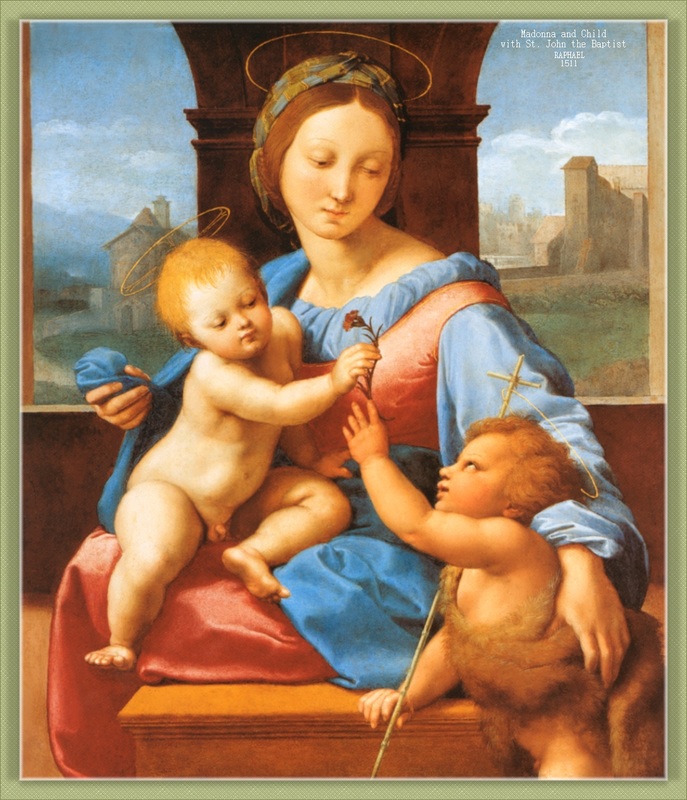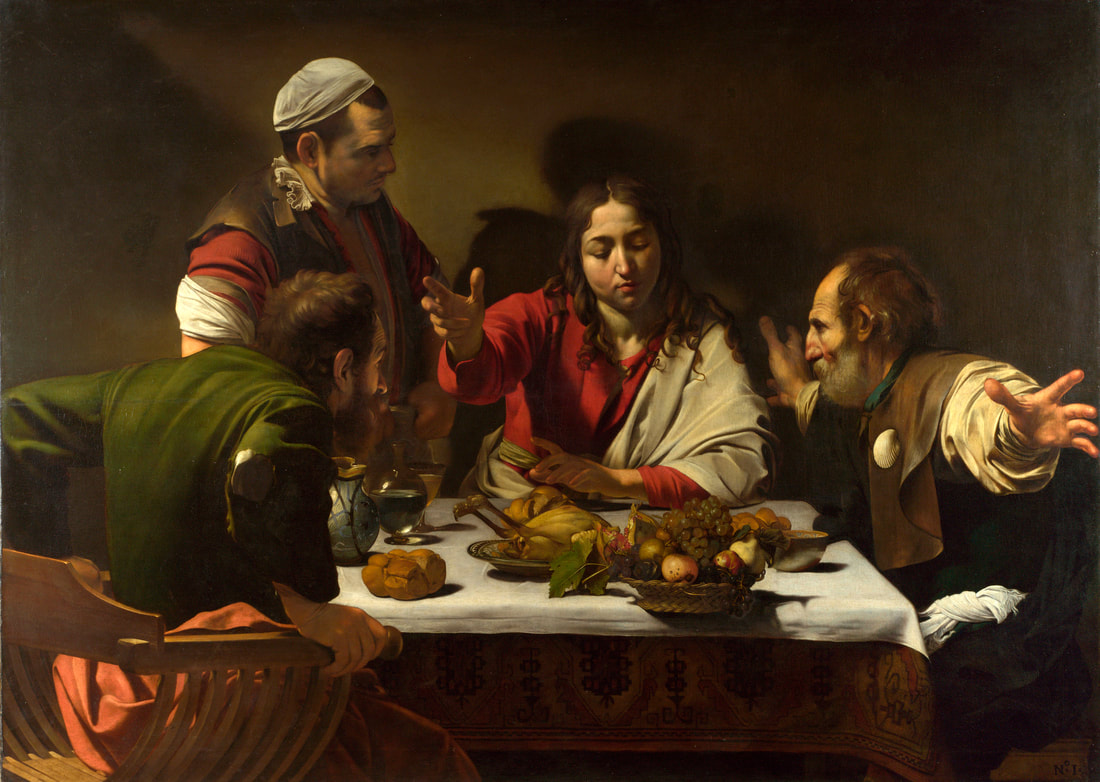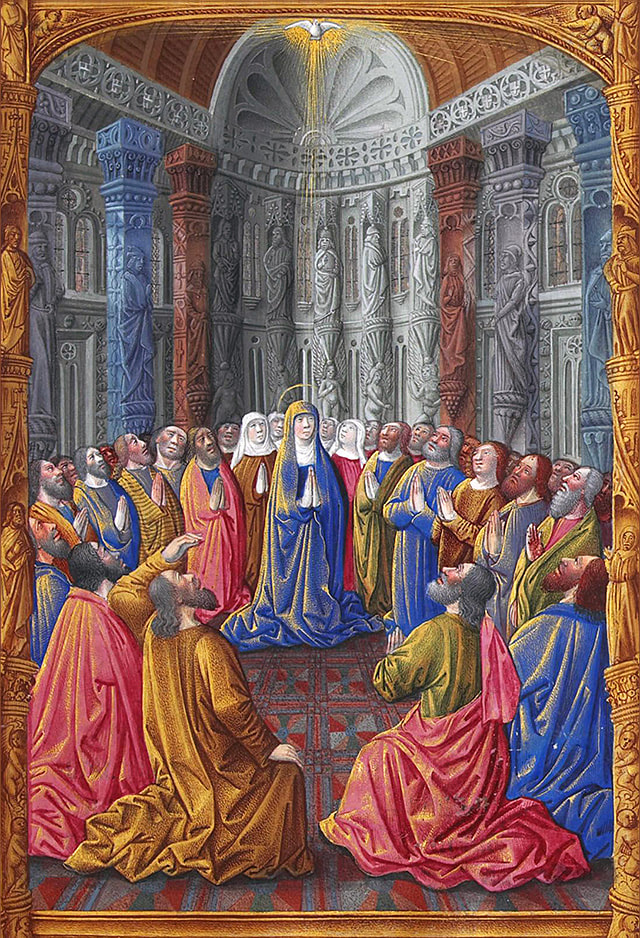 ‘Why did the Lord first show His resurrection to a woman and not to a man?’ This is not a question driven by 21st century gender politics, but rather the great Syrian theologian, St Ephrem, contemplating the place of the mother of God in the mystery of the Incarnation: ‘A mystery is here revealed to us with regard to the Church and the Lord’s Mother. The Virgin received the first beginning of His advent on earth, and to a woman He himself showed His resurrection from the sepulchre. Both at the beginning and at the end, it is His mother’s name that is there and resounds … It was a Mary that received Him on His coming into life, and a Mary who saw also the angels at the sepulchre’. St Ephrem helps us to see why Eastertide is as much the season of the Mother of God as Christmas and Epiphany. His praise for the holy God-bearer is full of wonder as he searches for language to describe the beauty and the joy of the Lady Mother of God, most high above all the earth. In the Saviour’s first beginning, he says, ‘Mary is made for us a heaven bearing the divinity, which Christ, without leaving His Father’s glory, shut up within the narrow limits of her womb … She is the temple of the Son of God … that mystical new heaven, wherein dwelt the King of kings as in His mansion’. She is the new Eden, in which the tree of life is planted, the ladder of Jacob, whereby God has descended to us. These titles and forms of praise help us to appreciate our Lady’s unique role in the work of salvation and in the renewal of creation. She only is the mother of God, ‘the bride whom the Father betrothed, the bridal chamber of the divine incarnation of the Logos’. In a beautiful sermon E. B. Pusey contemplates her as the New Eve, the one who undoes the knot of Eve’s disobedience, and leads us back to Paradise: ‘She, being the Mother of Him Who is our Life, became the Mother of Life; she was the Gate of Paradise, because she bore Him Who restored to us our lost Paradise; she was “the gate of Heaven,” because He, born of her, “opened the kingdom of heaven to all believers.”’ Again, we hear the unique role of the New Eve proclaimed, but we are also moved to consider her as a model for the Church which she figures – what Christ has done in her, he must also do in us: “the gate of Heaven,” because He, born of her, “opened the kingdom of heaven to all believers”. This door is opened for us, and we are invited to enter in. One of the great Old Testament figures of the Mother of God is the burning bush. The God of Abraham, Isaac, and Jacob, speaks to Moses from the burning bush; the bush burns but is not consumed. In stained glass and icon this scene is presented as a type or foreshadowing of the Annunciation to the Blessed Virgin Mary: just as the bush burned and was not consumed, so Mary gave birth while remaining a virgin, neither was she consumed by the divine fire. On the one hand, this type pictures our Lady’s uniqueness – no other bears the fire of the Godhead in this way. And yet, the fire which burns in Mary, is the fire of the divine life which burns in all who have been co-interred and wrapt round in the life of the Risen Son. This is the fire of the Holy Spirit which does not consume us, and which yet is to burn up all that is mere earth, the stubble in our lives, whatever does not lead us back to God. The life which is born of the God-bearer must also be born and grow in us. Lancelot Andrews made this point with a wonderful image, describing the fountain of baptism as corresponding to the Virgin’s womb. The same life and ‘original’ which He took in the womb of the Virgin, the same He placed for us in the womb of the Church, the font of baptism. I will conclude by considering how the Mother of God, His mother and ours in Him, serves as a model for us. Twice in second chapter of Gospel of St Luke, we are told that Mary ‘kept all these things, and pondered them in her heart’. Here Mary serves for us an image of the inner life of the Church. Mary pictures for us the attitude of attentive listening which is the stillness or silence of the heart (Luke 2:19, 51). The great teacher of the mystical life, Baron Von Hugel said that ‘Man is what he does with his silence’. Well, brothers and sisters, is that not a disturbing thought? What do we do with our silence, if we have any at all? Do we pick up our favourite electronic gadget – text, surf, face time, or, in other words, anything but silence. Or, perhaps we have less electronic forms of distraction and dissipation. But what do we do with our silence? In our Lady, we see an image of ‘the one who listens, who listened to the word of God at the Annunciation, who “kept all these sayings, and, pondered them in her heart”, who told the servants at the marriage feast to listen to her Son’. Mary is described as ‘a living heaven’ or ‘wider than heaven’ because of the life she bears, in John Donne’s words, ‘light in dark, and shutt’st in little room, Immensity, cloister’d in thy dear womb.’ But this ‘Immensity’ is not simply room in her body for a special baby, it is rather a spiritual landscape, the inner kingdom, the dwelling place of the Holy Trinity, and the place where she keeps and ponders all these things. We are invited not just to know about this kingdom, but to live in it. The sayings and the things which Mary pondered are given to us especially in the Scriptures – they are placed into our hands that we may keep and ponder them with her. John Keble, one of the fathers of the Catholic revival whose fruits we enjoy and celebrate today, urged his readers to this kind of contemplation: ‘The words and doings of God cannot but be full-charged with heavenly and mysterious meaning’. The things which Mary contemplated in her heart, and the things and words that we are given to ponder, are full-charged with the heavenly life of Christ, the life and presence which is the life of the Church, His Body. Mary is our joy, wider than heaven, the Mother of life, in part, because she is the model of contemplative union. This is not a message for spiritual superstars, but for each one of us. We may come to discover the inner kingdom if we can make any space for stillness and silence in our lives, to ponder the Word which she kept first in her womb then in her heart: ‘It is not in heaven … Neither is it beyond the sea, but the word is very nigh unto thee, in thy mouth, and in thy heart’ (Deut 30). This is the gift of the Mother of God to us – ‘Be it unto me according to thy word’ and through thy Word. The glories of the worship which we enjoy today belong to the reality which we may, with the our Lady, keep and ponder in our heart; they belong to the inner life of the Church which she embodies. ‘O divine living image in whom God the Creator has rejoiced, possessing a mind which is governed by God and directed to God alone, Earth-born little daughter whose womb contained a living heaven, a path of noetic silence: Hail Mary, full of grace, the Lord is with thee, blessed is the fruit of your womb, Jesus Christ, the Son of God. To Him be glory with the Father and the Holy Spirit to the infinity of the ages of ages. Amen.[1] [1] Sources referred to the in the sermon include: Thomas Livius, The Blessed Virgin in the Fathers of the First Six Centuries
©georgewesthaver The Rev. Dr. George Westhaver is the Principal of Pusey House, Oxford. Comments are closed.
|
St. Michael and All Angels Sermons:
|


 RSS Feed
RSS Feed